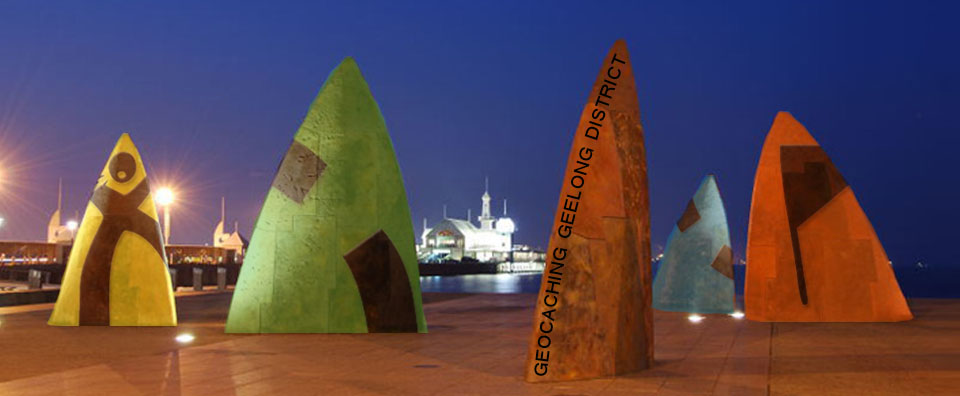Welcome to
Eastern Beach Mineral Springs - EarthCache
Mineral springs are naturally occurring springs that produce water containing minerals, or other dissolved substances, that alter its taste or give it a purported therapeutic value. Salts, sulfur compounds, and gases are among the substances that can be dissolved in the spring water during its passage underground.
Since 1895 the original Geelong Mineral Springs were a popular destination for visitors and residents. The Eastern Beach Mineral Springs were renowned for the curative properties of their waters.
The springs were closed in 1959 but the remnants of the original structures can be seen nearby within the tidal zone.
In 1999 the current Eastern Beach Mineral Spring bore was drilled to a depth of 35m. The mineral water emerging from the spring is quite unique, effervescent and is also drinkable at this location.
There are eight known natural mineral springs in the Geelong region including three in Corio.

Virtually all the natural mineral water resources in Australia are found in Victoria with the majority found in the Hepburn and Daylesford region. A surprising number of historic springs have been documented in other locations throughout the State – from Geelong and Clifton Springs in the south to Yea and Mansfield in the north. The Geelong site at Eastern Beach however is the only site outside of central Victoria that has a working spring and hand pump that is accessible for tasting.
The natural mineral waters of central Victoria evolve as groundwater that moves through deep persistent fractures and faults in bedrock. Rainfall infiltrates the fractures along the elevated ridges of the Great Dividing Range. Groundwater may circulate to great depths of up to 5 kilometres before returning to the ground surface. Natural mineral water discharges at springs in low-lying areas. Compared with Victoria’s geothermal waters, Victoria’s natural mineral waters have higher mineral concentrations.
The flow rate from individual mineral springs is generally low, in the order of 0.01 to 0.4L/sec. Natural mineral water is generally crystal clear and effervescent. The water chemistry is variable; the total dissolved solids content of Victoria’s natural mineral water resources falls in the range 380 to 10,000 mg/L. The surface discharge of mineral water in Victoria is generally cool.
Mineralised groundwater is typically many thousands of years old and formed by the infiltration of rain and surface water into the ground and its subsequent percolation and accumulation in permeable geological units known as ‘aquifers’. During the groundwater migration, minerals are absorbed from the aquifer giving the water distinct chemical characteristics for which geothermal and particularly natural mineral waters are renowned. Different flow paths and geology produces variations in groundwater temperature and chemical composition, which may have a bearing on its potential therapeutic properties.
The temperature of the water substantially influences the taste and effervescence. The mineral waters from mineral springs in Central Victoria have temperatures between 10° – 18°C and are “cold” waters. In the coastal sedimentary basins carbonated mineral waters have in situ temperatures that relate or are attenuated from the Formation temperature. At Geelong, carbonated mineral waters emerge at coastal springs with a temperature of 22° - 24°C. Temperatures of more than 60°C are attained in the Otway and Gippsland basins in the aquifer or reservoir formations where the high alkalinity waters occur at depths varying from 500 - 2000 m.

 Questions to log this EarthCache
Questions to log this EarthCache 
Q1. What are "mineral springs" and how do they occur?
Q2. What is the Total Alkalinity (as CaC03) contained in the mineral water here and explain how it effects the taste and quality of the water? Also, please tell me the temperature at which the mineral water is here
Q3. (Optional) Have a small taste. In your opinion is the water
...1) Salty
...2) Fizzy
...3) Fresh
...4) Brackish
...5) Will make good a cocktail
Hope you enjoyed this EarthCache & please feel free to upload a photo too 
Please send your answers to
"  "
"
through Message Center or through email.
Please feel free to log this cache once you've completed the EarthCache requirements while waiting for a response to your answers.
You will need to send me your answers to verify your find for this EarthCache and will most likely hear from me within 24 hours or if in the unlikely event, a correction or more detail is needed



